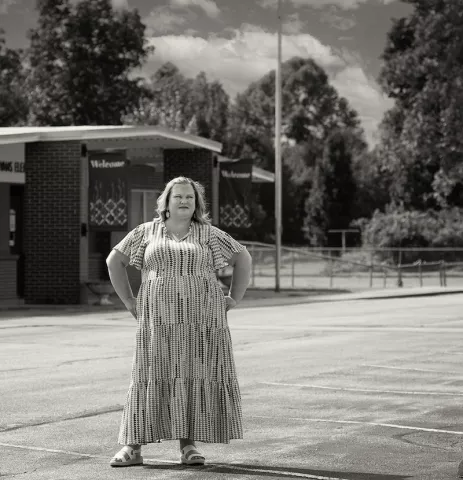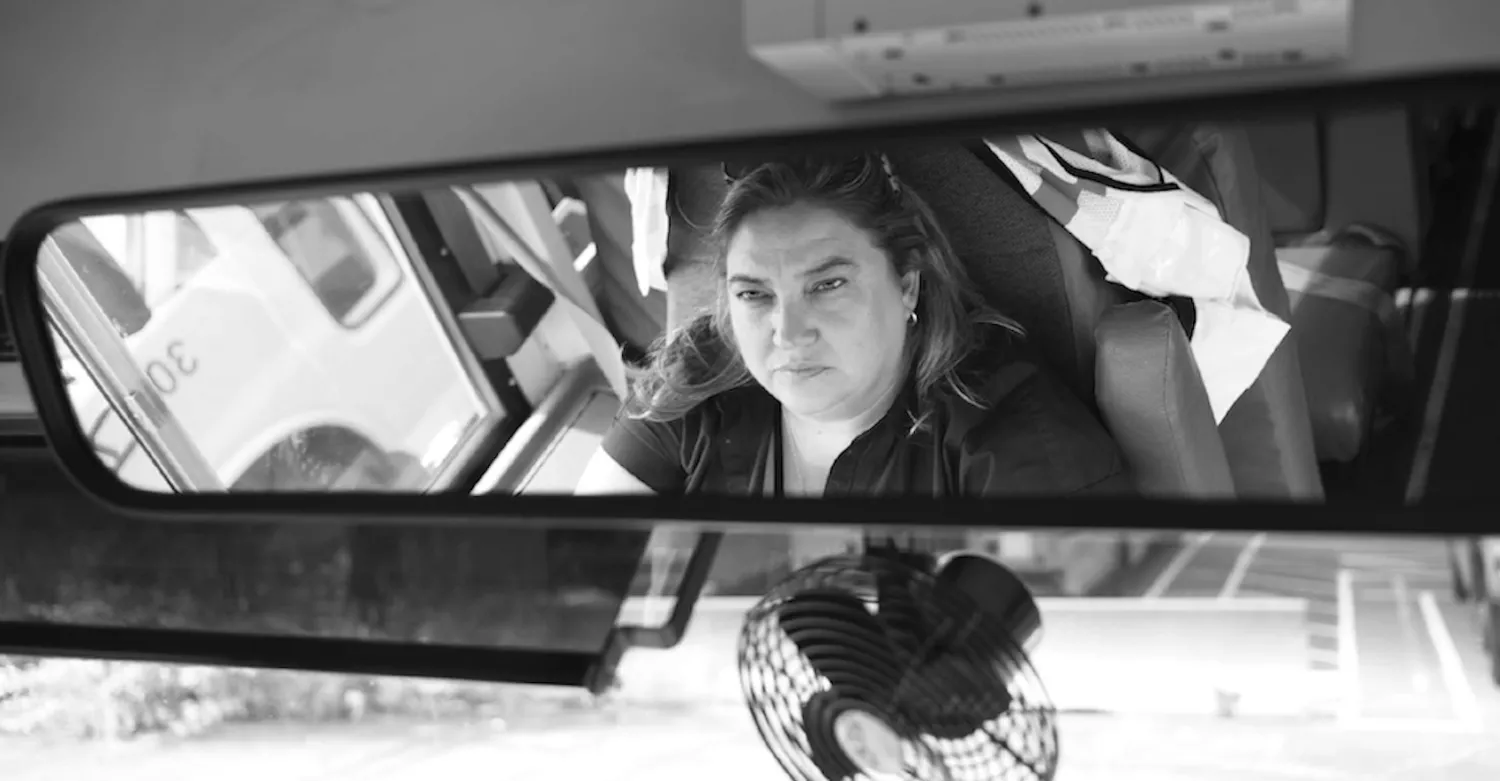Key Takeaways
- Although there is little research on gun violence on school buses, educators agree it is frighteningly easy for students to sneak guns on buses.
- There is no training for bus drivers on dealing with active shooters.
- The country needs to address access to guns before they get onto buses or into schools.
The student was sobbing when she showed up in Adena Barnette-Miller’s morning homeroom at Ripley High School, in West Virginia. The girl’s entire body trembled, the blood completely drained from her face. As Barnette-Miller gripped her in a tight hug she struggled to find out what was wrong.
Finally, the senior was able to speak through the tears. A boy had pulled out a gun on her bus. Before he could start shooting, another student was able to grab the gun from him. About 20 children on the bus, including elementary, middle, and high school students, were mere moments away from being shot.
The girl was in shock, the horror of the incident slowly sinking in. Her two younger sisters were riding the bus with her. As she struggled to protect them, she texted her mom who worked at the middle school to alert the principal and police. She was running on pure adrenaline.
“It took a while to find out what in the world was happening … but the fact is we were about 15 seconds away from a mass shooting on a school bus,” says Barnette-Miller in disbelief. “All those kids, I know. I went to school with the parents of all those kids on the bus. … I think of the fact that if it hadn’t been for the one who grabbed the gun, three of four children in that one family would be gone. Three beautiful kids. Gone.”
The small, rural community would have been devastated, she says, and they’d have been the ones the country would send thoughts and prayers to instead of policy and change.
“There’s no way to bring those babies back once they’re shot,” she says, tears springing to her eyes.
A Fight Almost Turns Deadly
There had been an argument, and the boy with the gun was angry. Police later found out that he and his brother had stolen the firearm from a neighbor.
It’s a situation that could easily happen anywhere, at any time, in any school system—especially now that gun culture is so prevalent.
Barnette-Miller says Jackson County, where Ripley is located, is “real” West Virginia. Many people don’t have running water or cell service, and hunting and guns are pervasive.

“I’m not anti-gun. I was raised around guns. I’m from a family of hunters and military veterans,” Barnette-Miller says. “But when a family friend showed up with an AR-15 to go hunting, my grandfather kicked him off his land. He said, ‘We only allow hunting weapons here, and that’s not for hunting.’”
“There is a big difference between a gun that shoots a deer and one that murders people,” she adds.
As of August, mass shootings—where four or more people, not including the shooter, are injured or killed—averaged more than one per day in 2022. And not a single week had passed without at least four mass shootings, according to the Gun Violence Archive.
Though mass shootings get a lot of attention and cause widespread fear, they account for a fraction of gun deaths in America. Most are suicides or individual homicides.
According to the gun violence prevention group Sandy Hook Promise, children living in poverty—both urban and rural—are more likely to die due to gun violence than their more affluent peers. Black youth are four times more likely to be killed by a gun than their White peers, and about one in five LGBTQ+ youth have been threatened or injured with a weapon on school property.
There is little research on gun violence on school buses, but educators agree that it is frighteningly easy for a student to smuggle a gun onto a bus.
School Bus Drivers are Worried
Maria Reed, president of the Bridgewater-Raritan Transportation Association, in New Jersey, says, “We have about 25 district drivers, and many of us have talked about how a student could easily bring a gun onto the bus, and we just don’t know what we’d do if someone was waving a pistol at us or shooting at random.
“We used to worry about hijacking of school buses, but now it’s gun violence. And kids with guns are getting younger and younger,” she adds.
As a starting place, Reed would like school bus drivers to receive active shooter training and to have a faster way to call for help.
“Back in the 1990s, buses had panic buttons that functioned like a 911 call to police. Newer buses don’t have them,” she says.
Another option would be for drivers to have a special “gun-on-the-bus” code to call out on the radio, which would alert authorities.
“Many of us have talked about how a student could easily bring a gun onto the bus, and we just don’t know what we’d do if someone was waving a pistol at us or shooting at random.”
“Some districts around the country have offered training on what to do if a bus was hijacked,” she says. Her district also trains drivers in how to evacuate the bus in case of fire or flooding. The drivers then train the students on how to jump out the back door and gather on one side away from the bus.
Active-shooter training should be just as routine, Reed says. She is also advocating for bus drivers and students to receive training on how to identify students who are struggling emotionally and how to notify the school.
“The older kids might see something on social media, or hear something that was said in the cafeteria or hallway, like, ‘I’m going to bring a gun and shoot it all up,’” Reed says. “If someone says something to an adult, an incident could be avoided.”
Research supports that approach. Studies have found that in four out of five school shootings, the attacker told someone about their plans.
Training is Only Part of the Solution
Sandy Hook Promise aims to give students a pathway to reporting problems before they turn into tragedies.
The group offers the Say Something training to schools at no cost.
The program teaches middle and high school students to recognize the warning signs that someone could be at risk of hurting themselves or others and trains students in how to say something to a trusted adult.
The program aligns seamlessly with schools’ existing social and emotional learning curriculum, instruction, and programming.
Barnette-Miller is grateful that her district offers the training, but she says that’s only one part of the answer.
“This is a society problem,” she says. “It should be harder to get a gun than it is to buy a pack of cigarettes. We’ve got to do more.”

Guns Threaten Rural and Urban Districts Alike
Arlington County, Virginia, is one stop away from Washington, D.C. on the subway and has a population 10 times the size of Jackson County. It's like comparing country mouse and city mouse, but when it comes to guns, the two districts have strikingly similar concerns.
An increase in fights and violence in Arlington schools has educators worried, including local school bus driver Ivis Castillo.
“We worry daily that kids could bring a gun on the bus,” she says. “Especially high schoolers and middle schoolers.
Fights break out, and we don’t know how far it can go. Often everything is all planned out, and the students have more friends waiting at the bus stop to attack. It is a very real threat.”
“This is a society problem. It should be harder to get a gun than it is to buy a pack of cigarettes. We’ve got to do more.”
Castillo says she is firmly in favor of standing up for our freedoms, but she believes we must do more to prevent gun violence. Training for active shooters on the bus would be helpful, but it’s not a long-term solution.
The ultimate goal, she says, should be to stop guns from getting onto the bus or into schools in the first place.
“Metal detectors at schools just make it feel like prison,” Castillo says. “Why do students have guns in the first place, why mass weapons? We need to get to the root of the problem, the prevalence of guns, the access. Why is this happening?”
She adds, “There are mental health problems in every part of the world, in every income level, in every kind of government. But the U.S. is the only one dealing with so many shootings. We need to ask why.”


